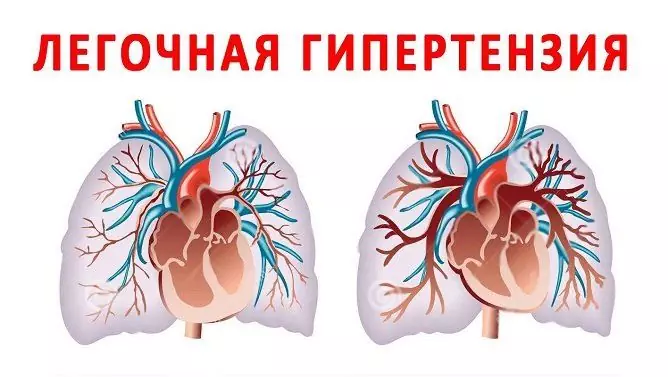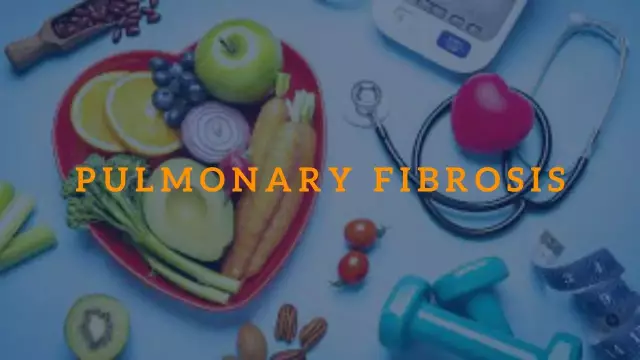- Author Rachel Wainwright [email protected].
- Public 2023-12-15 07:39.
- Last modified 2025-11-02 20:14.
Pulmonary edema in the elderly
The content of the article:
- What's going on in the lungs
- The reasons
- Cardiogenic form
- Noncardiogenic form
- Symptoms
- Diagnostics
-
Treatment
- How to help a sick person at home
- Main treatment
- Treatment depending on the cause
- Consequences for life
- Video
Pulmonary edema in the elderly can develop as a complication of heart disease, respiratory infections, pneumonia, and poisoning. This is a serious condition for a person of any age, but especially an elderly person. Compensatory capabilities at this age are reduced, so it is more difficult for the body to cope with pathology.

Pulmonary edema, a life-threatening condition caused by fluid buildup in the lung tissue
What's going on in the lungs
In the pulmonary interstitium, and later in the alveoli, fluid accumulates, which sweats from the pulmonary capillaries (transudate). Due to the release of fluid into the alveoli, gas exchange is disrupted, which leads to severe respiratory failure.
The reasons
Pulmonary edema (pulmonary edema) is not a separate disease, but a syndrome that develops as a complication of many diseases. The most common cause is dysfunction of the heart, or rather, the left ventricle. Pulmonary edema in the elderly can occur without cardiac pathology, for example, when lung tissue is damaged. The cause may be an inflammatory response (with pneumonia) or exposure to toxic substances.
Cardiogenic form
Cardiogenic OL occurs as a manifestation of left ventricular heart failure. The following diseases can lead to the development of pathology:
- myocardial infarction, post-infarction conditions;
- acquired heart defects (both aortic and mitral);
- hypertensive crisis;
- heart rhythm and conduction disorders (arrhythmias, blockade).
The mechanism of development of the cardiogenic form of edema is associated with an increase in pressure in the pulmonary capillaries. This is due to an increase in diastolic pressure in the left ventricle.
The left ventricle cannot contract enough to push all the blood from the cavity into the aorta. This leads to an increase in pressure, first in the left ventricle, and then in the left atrium. Since the pulmonary veins flow into the left atrium, over time the pressure rises in the pulmonary circulation. The fluid first sweats into the interstitial tissue and then into the alveoli.
By the same principle, the lungs swell due to hypervolemia (increased blood volume).
Noncardiogenic form
Toxic OB is more common in older people than in other age groups. At the heart of noncardiogenic edema is damage to the air-blood barrier. As a result, there is a violation of fluid permeability into the interstitial space and alveoli. This is possible under the following conditions:
- respiratory tract burn;
- pneumonia;
- chest trauma;
- septic conditions;
- pancreatitis;
- renal failure;
- acute violation of cerebral circulation;
- drug poisoning (for example, salicylates);
- poisoning with toxic substances.
The mechanism of development of pulmonary edema in these conditions is associated with the action of toxins (poisons, bacterial exotoxins, metabolites in renal failure, etc.) on the endothelium of the pulmonary capillaries.
Symptoms
The symptoms of the disease develop abruptly, within a few minutes. Shortness of breath, agitation occurs, the patient becomes difficult to breathe, he tries to take a sitting position and rest his hands.
| Symptom | Explanation |
| Dyspnea | Difficulty breathing is often the first symptom of an illness. Dyspnea is initially caused by swelling of the interstitial tissue. There is a feeling of lack of air, exhalation becomes difficult, breathing quickens. When fluid enters the alveoli, shortness of breath increases sharply. |
| Cough | The cough occurs due to stagnation in the pulmonary circulation. At first, the cough is dry, that is, it is not accompanied by sputum production. When fluid enters the alveoli, foamy sputum appears, often pink. |
| Orthopnea |
Shortness of breath and coughing worse when lying down, which forces the sick person to sit or stand. The forced position that the patient takes (sitting, resting his hands on a chair or bed) is called orthopnea. |
| Signs of respiratory failure | Pallor of the skin is observed, less often - blue discoloration (cyanosis). Cold sweat appears on the skin. |
Other symptoms may develop, depending on the primary disease:
- With myocardial infarction, intense pain comes to the fore, which is localized behind the sternum. In this case, blood pressure will be lowered due to left ventricular failure.
- In a hypertensive crisis, the main symptom is an increase in blood pressure. Additionally, there is a headache, redness of the skin of the face.
- With pneumonia or a septic condition, in addition to the main symptoms, an increase in body temperature will also be observed.
- With a burn of the respiratory tract with gastric contents, the development of all symptoms will be preceded by vomiting.
Diagnostics
With OL, you should immediately seek emergency medical attention. The doctor will conduct an examination, prescribe additional tests and appropriate treatment.
First and foremost (along with emergency measures), the doctor will conduct a physical examination:
- auscultation of the lungs - while wheezing and crepitus are heard;
- measurement of blood pressure - can be either low or high;
- auscultation of the heart - with cardiogenic edema, there is muffledness or irregularity of heart sounds.
OB should be differentiated from pulmonary embolism (PE), when a thrombus enters the pulmonary vessels and leads to their blockage. Also, diagnostics is aimed at identifying the cause, since the treatment is different for different forms of edema.
| Diagnostic method | Description |
| Chest X-ray | Changes on the radiograph depend on the stage of the disease. If fluid accumulates in the alveoli, darkening is observed without clear anatomical boundaries. |
| Electrocardiogram |
ECG changes are detected in cardiogenic edema. With the help of an ECG, it is possible to identify the primary disease - myocardial infarction, overload of the left heart, rhythm and conduction disturbances. With PE, there is an overload of the right heart. |
| Echocardiography | With a cardiogenic form of edema, it is possible to reveal a violation of the contractility of the left ventricle - the ejection fraction decreases. Heart defects can also be detected. |
| Pulse Oximetry | Pulse oximetry can be used to assess blood oxygen saturation. |
| Pulmonary artery catheterization | Used for differential diagnosis between cardiogenic and non-cardiogenic forms. With cardiogenic edema, there is an increase in pressure in the pulmonary artery. |
Treatment
Treatment includes several areas - emergency measures at the prehospital stage, oxygen inhalation, and medical therapy in a hospital. The tactics of therapy depends on the form of the disease - cardiogenic or non-cardiogenic.
It is categorically contraindicated to treat pulmonary edema at home, with the help of improvised means. It is necessary to provide qualified medical care.
How to help a sick person at home
Pulmonary edema is a medical emergency that requires immediate medical attention. First aid can be provided before the arrival of an ambulance at home. How to relieve the condition:
- Give the person a sitting position with the legs down.
- Provide fresh air - open a window, ventilate the room.
- Unbutton clothing if it squeezes neck and chest.
- Hot foot baths. They increase the flow of blood to the legs, reducing the return to the pulmonary circulation.
- If possible, tourniquets or cuffs can be applied to the limb. This will slow the progression of symptoms.
After the ambulance arrives, follow the instructions of the medical staff. Further treatment includes taking medications, which are prescribed by a doctor depending on the cause and severity of the condition.

Emergency medical attention is needed if symptoms of pulmonary edema appear
Main treatment
Drug therapy for OL in the elderly includes the use of general and etiotropic drugs. The main treatment includes the following medicines:
| Nitrates |
They reduce the pressure in the pulmonary capillaries, this reduces stagnation in the pulmonary circulation and, accordingly, edema. In addition, they reduce the burden on the heart, which is necessary for cardiogenic edema. Nitrates include Nitroglycerin (a short-acting drug that must be injected every 3-5 minutes) and sodium nitroprusside (lasting longer, 20-30 minutes). |
| Pain medications | Narcotic analgesics, usually morphine drugs, are used to relieve pain. Morphine not only reduces pain, but also eliminates the influence of the sympathetic nervous system (vasospasm). |
| Diuretics |
Loop diuretics are usually used - Furosemide, Torasemide. Their action occurs quickly, within 5-7 minutes. Reduction of edema is associated not only with increased excretion of fluid, but also with varicose veins. |
Older people have many comorbidities, which makes it difficult to select a treatment. For example, nitrates are contraindicated for the treatment of patients with mitral or aortic stenosis, arterial hypotension, and severe tachycardia.
In OL, treatment is also aimed at improving blood oxygenation by using respiratory support. Oxygen is supplied to the patient through a face mask or nasal cannula. Respiratory mixtures with high oxygen content - 60-100% are used. The oxygen supply is carried out through antifoaming agents, for example, ethyl alcohol.
Treatment depending on the cause
With OL, treatment is also used to get rid of the cause:
- In cardiogenic shock, drugs are used that increase the contractility of the myocardium and vascular tone. The first group includes cardiac glycosides (Korglikon), the second - Dopamine, Dobutamine, Levosimendan.
- If the heart rhythm is disturbed, antiarrhythmic drugs are used, for example, Amiodarone, Lidocaine.
- With pneumonia, antibacterial agents are prescribed.
- In case of hypertensive crisis, drugs that lower blood pressure are additionally prescribed - beta-blockers, ACE inhibitors.
Consequences for life
The prognosis depends on several factors: the timeliness of assistance, concomitant pathology and the severity of the condition. The danger of the disease lies in the development of acute respiratory failure. Because of this, not only the respiratory system suffers, but also all organs that do not receive enough oxygen.
With OL, patients die from asphyxia. With an early start of treatment (at the stage of interstitial edema), complete recovery is possible. In many respects, the prognosis depends on the cause; with cardiogenic shock or sepsis, the mortality rate is several times higher.
Video
We offer for viewing a video on the topic of the article.

Anna Kozlova Medical journalist About the author
Education: Rostov State Medical University, specialty "General Medicine".
Found a mistake in the text? Select it and press Ctrl + Enter.






